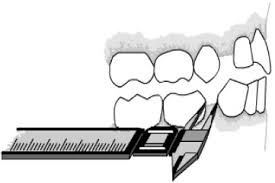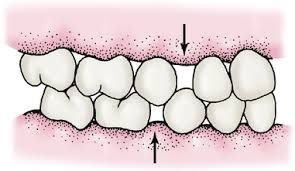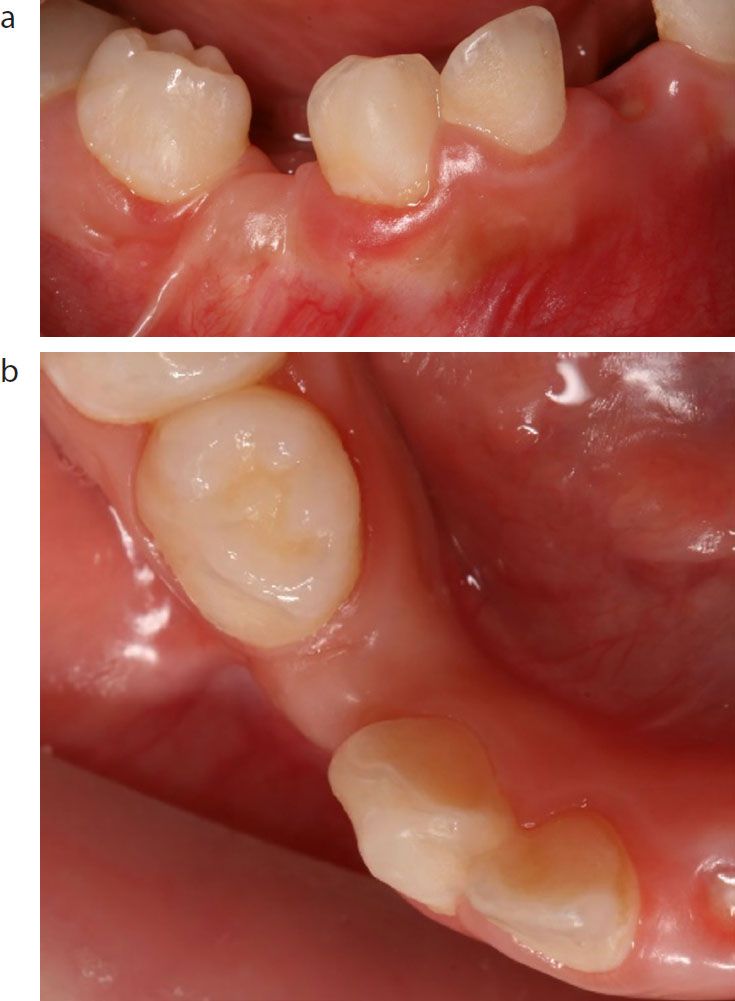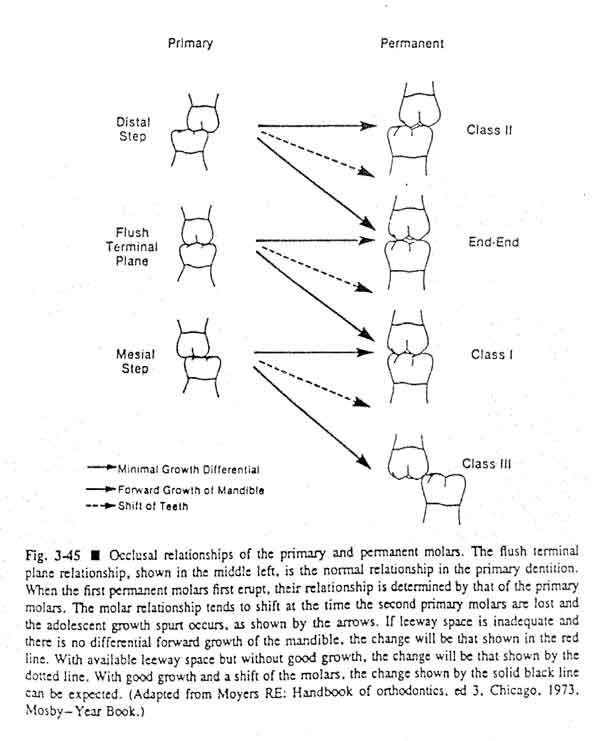"Primate spaces are located between the lateral incisors and canines in the upper arch, and between the first molars and canines in the lower arch, whereas developmental spacing (also called interdental spacing) is found between the incisors in both the upper and lower arches"Source
Another nomenclature for primate space is (Anthropoid Space)
It is a physiological space which is naturally present between the primary teeth. In the maxillary arch, it is spotted between the 'B's and 'C's whereas in the mandibular arch, it is spotted between the 'C's and 'D's of the dentition.
It has been noticed that primate space is present both in upper arch and lower arch dentition in the present population. It is also noted according to some researchers that large percentage of children has a dimension ranging from 1–2 mm of primate space in both the arches and a less than 3.5% of the researched sample had about 4 mm of dental primate space.
Generalized spacing spotted to be mesial to primary canine and in between the incisors is termed a physiological space. In actual an overcrowded primary dentition implies short arch size which will in turn make the permanent dentition to be overcrowded as well.
"Primate spaces are diastemata consistent with an inherent physiological pattern rather than functional adaptation"Source
In clinical practice some scenarios might present like an expanded primate space which can serve as a form of provisional diagnosis such as the following;
i- Individual Variation
ii- Tooth size
iii- Arch length discrepancy
iv- Infection
v- Traumatic dental injury
Structural or obstructive pathologies such as malignant neoplasm, developmental cyst, odontoma or even supernumerary tooth.
Approximately about 60% of children have primate spaces primary dentition stage. Primate spaces are more commonly spotted in boys than girls and are most often observed in the maxillary arch in comparison to the mandibular arch.
Although, there is significant variation in the presence or absence of primate spaces in the primary dentition, they tend to remain stable and unchanged after the eruption of the primary teeth, bringing about little evidence of primary canine relationship changes in either of the arch. As earlier clarified, primate spaces tend to show and occur more frequently and even with wider mesio-distal dimensions in the maxilla compared with the mandible as regards the arch comparison.
Primate space also occurs between the canine tooth and first premolar tooth in adult primates with reference to each quadrants.
That's all as regards primate space in human dentition on the this post and happy blogging and reading.
Happy Blogging and Reading 💥💥💥💥
Video from Dentistry n more YouTuber



